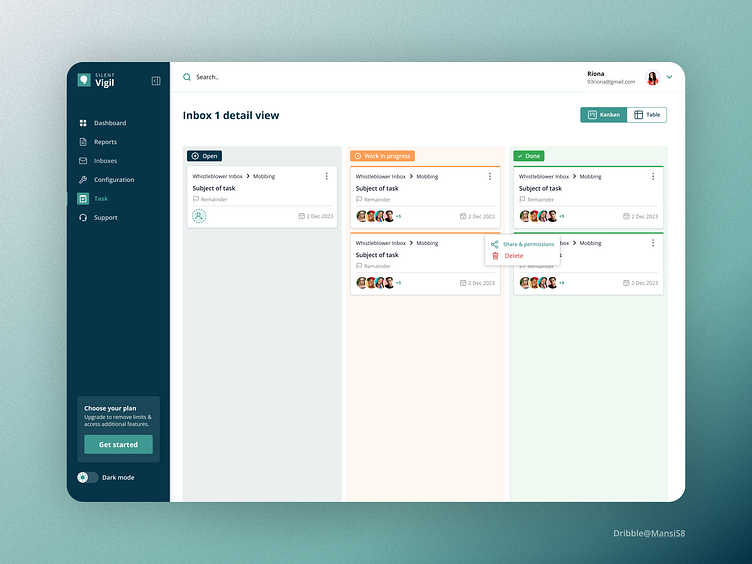Kanban Board View
A Kanban board is a visual project management tool used to track and manage work as it progresses through various stages of a workflow. It typically consists of columns representing different stages of the process and cards representing individual tasks or items.
Key Components:
Columns: Each column on the Kanban board represents a stage in the workflow, such as "Open," "Work In Progress," and "Done." These columns visually depict where tasks are in the process.
Cards: Tasks or items are represented by cards that move horizontally across the board as they progress through the workflow. Each card contains information about the task, such as its title, description, assignee, due date, and any other relevant details.
Work in Progress (WIP) Limits: Kanban typically imposes limits on the number of tasks allowed in each column at any given time. This helps prevent bottlenecks and overburdening of team members, ensuring a smoother flow of work.
Benefits of Kanban:
Visual Management: Kanban provides a clear, visual representation of the workflow, making it easy for team members to understand the status of tasks at a glance. This transparency improves communication and collaboration within the team.
Flexibility: Kanban boards are highly flexible and can be adapted to fit various workflows and processes. Teams can easily customize columns, add new stages, or modify existing ones to match their specific needs.
Efficiency: By limiting work in progress and focusing on completing tasks one at a time, Kanban helps teams optimize their workflow and minimize multitasking. This leads to faster cycle times, improved productivity, and higher-quality output.
Continuous Improvement: Kanban promotes a culture of continuous improvement by encouraging teams to identify bottlenecks, inefficiencies, and areas for optimization. Teams can use metrics and analytics to measure performance, identify areas for improvement, and make data-driven decisions to enhance their processes over time.
Collaboration: Kanban fosters collaboration and alignment among team members by providing a centralized platform for tracking and managing work. Team members can easily see who is working on what, share updates, and coordinate efforts to achieve common goals.
Customer Focus: Kanban emphasizes delivering value to customers by focusing on completing tasks that directly contribute to customer satisfaction. By visualizing the flow of work and prioritizing tasks based on customer needs, teams can ensure that they are delivering the right features and functionality at the right time.
Overall, Kanban is a powerful tool for streamlining workflows, improving collaboration, and driving continuous improvement in organizations of all sizes and industries.

